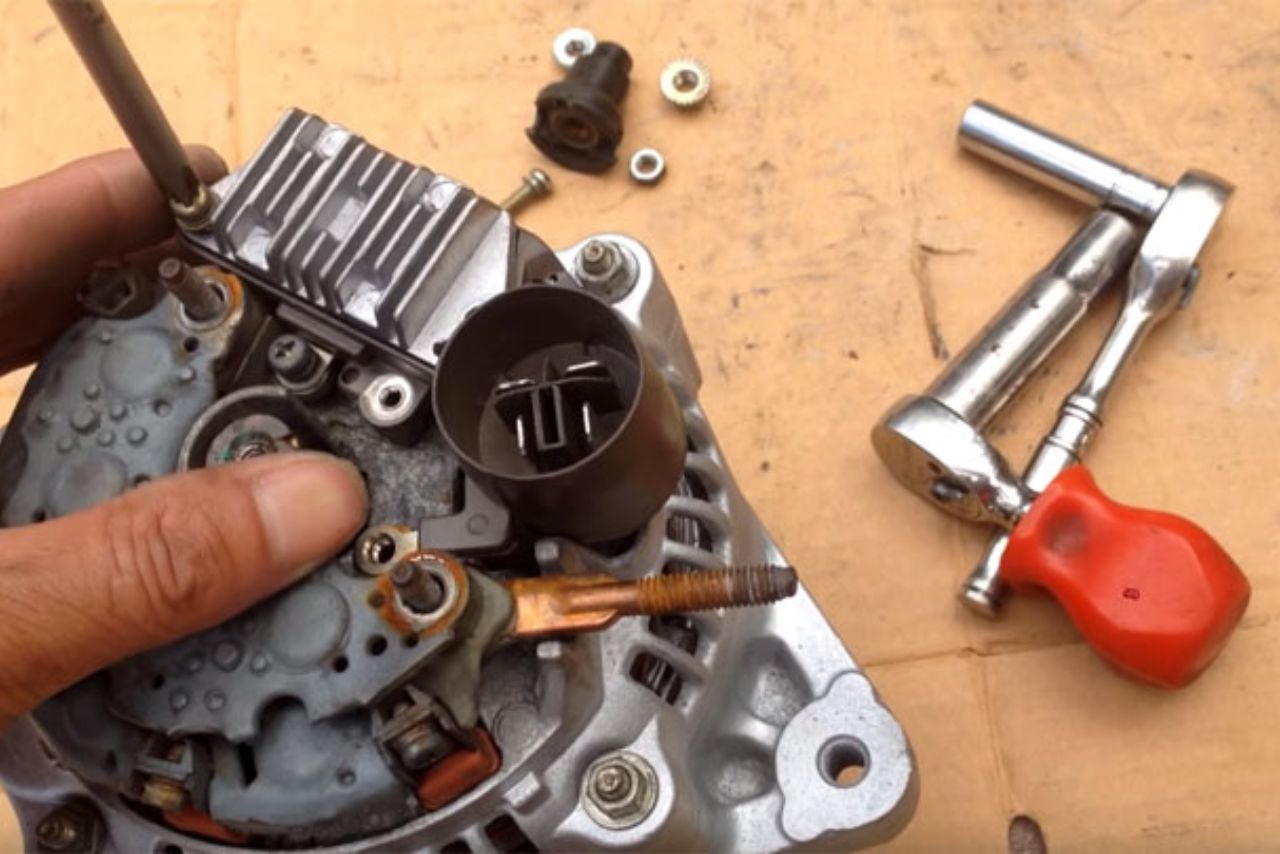Do you ever wonder How Long Can You Drive With a Bad Voltage Regulator? Well, wonder no more!
In this article, we will explore the potential consequences of driving with a faulty voltage regulator and discuss when it is safe to continue driving.
The voltage regulator is a crucial component of your electrical system, as it controls the amount of electrical charge that is sent to the battery.
When the voltage regulator malfunctions, it can result in an inconsistent flow of electricity, which can cause various issues.
These issues can range from a dead battery to a complete electrical system failure, leaving you stranded on the side of the road.
So, let’s dive into this topic and find out how long you can push your luck with a bad voltage regulator before it’s time to seek repairs.
How Long Can You Drive With a Bad Voltage Regulator?
You can drive with a bad voltage regulator for a short period of time, but it is not advisable. The voltage regulator is responsible for keeping the voltage output of the alternator within a safe range.
If the voltage regulator is bad, the voltage output of the alternator can be too high or too low, which can damage the battery and other electrical components in the UTV.
The amount of time you can drive with a bad voltage regulator depends on a few factors, such as the condition of your battery and the amount of electrical load on the UTV.
If your battery is in good condition and you are not using many electrical accessories, you may be able to drive for a few hours with a bad voltage regulator.
However, if your battery is weak or you are using a lot of electrical accessories, you may only be able to drive for a few minutes before the battery dies.
If you suspect that your voltage regulator is bad, you should have it checked by a qualified mechanic as soon as possible.
Driving with a bad voltage regulator can damage your battery and other electrical components, which can lead to expensive repairs.
Here are some of the symptoms of a bad voltage regulator:
Signs of a Bad Voltage Regulator
| Signs of a Bad Voltage Regulator |
|---|
| Dim or flickering lights |
| Dead battery |
| Unusual gauge readings |
| Electrical issues |
If you suspect that your vehicle’s voltage regulator is acting up, there are a few telltale signs that can help you confirm your suspicions. Pay attention to the following indicators:
Dim or Flickering Lights:
One of the most common signs of a faulty voltage regulator is dim or flickering lights.
If you notice that your headlights, interior lights, or dashboard lights are not as bright as they used to be, it could be due to an inconsistent flow of electrical current.
This can be dangerous, especially at night, as it affects your visibility on the road.
Dead Battery:
A bad voltage regulator can lead to a drained battery. If your battery frequently dies or struggles to hold a charge, it could be a result of the regulator’s inability to maintain a consistent voltage output.
This can leave you stranded, especially if you rely on your vehicle for daily commuting.
Unusual Gauge Readings:
Keep an eye on your vehicle’s gauges. If you notice erratic or abnormal readings on the voltmeter or ammeter, it could indicate a problem with the voltage regulator.
Fluctuating voltage levels can negatively impact the overall performance of your vehicle’s electrical system.
Electrical Issues:
A faulty voltage regulator can cause various electrical problems. These may include issues with power windows, malfunctioning radio or audio system, erratic speedometer readings, or even sudden engine stalling.
If you experience any of these issues, it’s worth investigating the voltage regulator as a potential culprit.
Remember that driving with a bad voltage regulator can have consequences not only for your vehicle but also for your safety on the road.
Effects of Driving with a Bad Voltage Regulator
Driving with a bad voltage regulator can have several negative effects on your vehicle’s electrical system. Here are some of the common consequences you may experience:
How to Test Your Voltage Regulator?
Testing your voltage regulator is an important step in diagnosing any potential issues with your vehicle’s electrical system.
Here’s a simple guide to help you test your voltage regulator and determine if it needs to be replaced.
Remember, if you’re not comfortable performing these tests yourself, it’s always best to consult a qualified mechanic who can diagnose and repair any voltage regulator issues for you.
| Test | Ideal Result |
|---|---|
| Battery Voltage | Approximately 12.6 volts |
| Static Voltage Test | Between 13.8 and 14.4 volts |
| Load Test | Voltage drop below 13 volts is undesirable |
Testing your voltage regulator can help ensure the proper functioning of your vehicle’s electrical system and prevent potential breakdowns on the road.
Watch Video: How Long Can You Drive With a Bad Voltage Regulator?
Steps to Replace a Bad Voltage Regulator
Replacing a bad voltage regulator is a relatively straightforward task that can be done by following a few simple steps. Here’s a breakdown of the process:
Now that you know the steps involved in replacing a bad voltage regulator, you can tackle this task with confidence and keep your vehicle’s electrical system in good working condition.
Conclusion: How Long Can You Drive With a Bad Voltage Regulator?
In conclusion, driving with a bad voltage regulator is not recommended and could lead to various issues with your vehicle’s electrical system. Here are the key points to take away:
Remember, regular maintenance and timely repairs are key to keeping your vehicle in optimal condition.
If you suspect a problem with your voltage regulator or experience any electrical issues, it is recommended to have it inspected and repaired by a qualified technician to prevent further damage and ensure your safety on the road.
By taking proper care of your vehicle’s electrical system and addressing any voltage regulator issues promptly, you can avoid unnecessary headaches and maintain a reliable and functional ATV.
FAQs
What Is a Voltage Regulator?
A voltage regulator is an electronic device that regulates the voltage supplied to an electrical system to a set level.
It is used to maintain a stable voltage level and prevent voltage spikes and drops.
How Long Can You Drive with A Bad Voltage Regulator?
Driving with a bad voltage regulator can lead to a variety of problems, such as engine stalling, power surges, and decreased fuel economy.
It is not recommended to drive with a bad voltage regulator, and the issue should be addressed as soon as possible.
What Are the Signs of A Bad Voltage Regulator?
The signs of a bad voltage regulator can include dim headlights, engine stalling, power surges, and decreased fuel economy.
What Happens when The Voltage Regulator Fails?
When the voltage regulator fails, the alternator can overcharge the battery, causing it to overheat and eventually fail.
This can also lead to other electrical components not getting the proper voltage they need to operate properly.
How Can I Fix a Bad Voltage Regulator?
The best way to fix a bad voltage regulator is to have it replaced with a new one.
It is important to make sure that the new voltage regulator is compatible with your vehicle and is of good quality.




